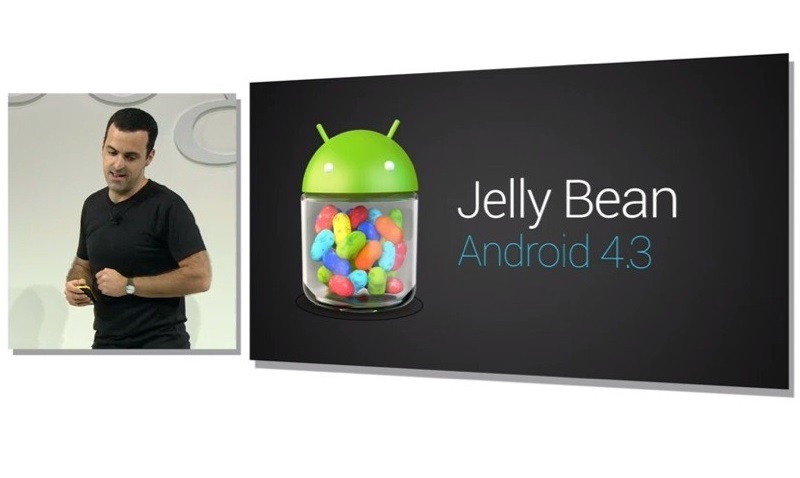
Another announcement coming from the Google event today is finally an official release on Android 4.3, an updated version of Jelly bean that has been leaked overwhelmingly amount of times the past few months. Well now we have the official release with the new Nexus 7 arriving with it and older Nexus devices like the Nexus 4, previous Nexus 7, Nexus 10 and of course the Galaxy Nexus getting an OTA update starting today but that may depend on regions and carriers.
The new version of Android includes Bluetooth Smart Technology, OpenGL ES 3.0 for increased detail in graphics. The unknown feature arriving will be Netflix 1080p streaming support which is something that has been wanted for sometime now. Another feature coming to Android 4.3 which is restricted profiles which prevents certain things like in-app purchases and other things and also limit acces to certain apps, basically giving the owner more control of what other users can do when using the device. There is no word on when we can expect the new version of Android to make it’s way to other device or two the Google editions of the Galaxy S4 or HTC One.
Check out the blog entry from Google’s developer blog below for more information.
[accordion title=”Google Developer Blog article” id=”id-here”]
Android 4.3 and Updated Developer Tools
- OpenGL ES 3.0 — Game developers can now take advantage of OpenGL ES 3.0 and EGL extensions as standard features of Android, with access from either framework or native APIs.
- Bluetooth Smart — Now your apps can communicate with the many types of low-power Bluetooth Smart devices and sensors available today, to provide new features for fitness, medical, location, proximity, and more.
- Restricted profiles — Tablet owners can create restricted profiles to limit access to apps, for family, friends, kiosks, and more. Your app can offer various types of restrictions to let tablet owners control its capabilities in each profile.
- New media capabilities — A modular DRM framework enables media application developers to more easily integrate DRM into their own streaming protocols such as MPEG DASH. Apps can also access a built-in VP8 encoder from framework or native APIs for high-quality video capture.
- Notification access — Your apps can now access and interact with the stream of status bar notifications as they are posted. You can display them in any way you want, including routing them to nearby Bluetooth devices, and you can update and dismiss notifications as needed.
- Improved profiling tools — New tags in the Systrace tool and on-screen GPU profiling give you new ways to build great performance into your app.
Check out the Android 4.3 platform highlights for a complete overview of what’s new for developers. To read more about the new APIs and how to use them, take a look at the API Overview or watch the new DevBytes videos.
Along with the new Android 4.3 platform we’re releasing an update to the Android NDK (r9). The new NDK gives you native access to the OpenGL ES 3.0 APIs and other stable APIs in Android 4.3, so if you use high-performance graphics in your games or apps, make sure to check it out.
Last, we’ve updated the Android Support Library (r18) with several key APIs to help you build great apps with broad compatibility. Most important, we’ve added an Action Bar API to let you build this essential Android design pattern into your app with compatibility back to Android 2.1. For apps targeting RTL languages, there’s a new BidiFormatter utility you can use to manage RTL strings with compatibility back to Android 2.1. Also, watch for a new RenderScript feature coming soon that will let you take advantage of hardware-accelerated computation with compatibility back to Android 2.2.
You can get started developing and testing on Android 4.3 right away, in Android Studio or in ADT/Ant. You can download the Android 4.3 Platform (API level 18), as well as the SDK Tools, Platform Tools, and Support Library from the Android SDK Manager
[/accordion]
Source: Google Android Developers Blog